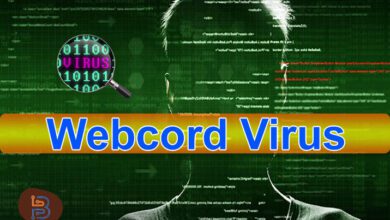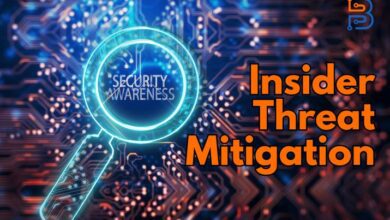Essential Building Blocks of IoT

IoT, innovative technology that is essential in building a smart home filled with advanced features – performs a vital role in the connectivity of differents things. Users can connect different devices to gain insights in an effective manner. At heart, the IoT depends on several basic building blocks that provide a bedrock of functionality for its widespread adoption and use. Firstly, you must understand that knowing these parts is the key to maximizing IoT applications.
In this article, we’ll explain to you what the most important building blocks of IoT are.
What is IoT?
The Internet of Things (IoT) is a network of connected devices that can collect and exchange data over the Internet without human intervention. Furthermore, it lets devices exchange data to process and do what is necessary by taking decisions based on the data.

Most Essential Building Blocks of IoT
Individuals or businesses that are seeking to implement an IoT system to build houses or connect interconnected devices should know its most essential building blocks. Here are the building blocks of the Internet of Things (IoT):
- Connectivity
- Sensors and Actuators
- Data Processing and Analytics
- Security and Privacy Measures
- Standards and Interoperability
- User Interface and Experience
Connectivity
A backbone of the IoT system, connectivity is probably one of the main components. It makes it possible for devices to exchange information easily. Here, you will get to know some of the best connectivity options to maintain connectivity:
- Wi-Fi: This connectivity option offers a high-speed wireless network that is suitable for devices within range of the Wi-Fi router.
- Bluetooth and BLE (Bluetooth Low Energy): These are good for inter-device communications over short ranges, such as wearable devices and smart homes. Moreover, they permit short-range devices to exchange data among connected devices.
- Cellular Networks: Employing these technologies, cellular networks allow IoT devices to communicate over wide areas (3G, 4G LTE) and come to the 5th generation. This connectivity lets firms converse and share data over great distances.
- LPWAN (Low-Power Wide-Area Network): This connectivity option offers long-range, low power communication for those IoT devices which are spread over extensive areas. Such options offer possibilities like interconnecting devices, making processes automated and streamlined.
Sensors and Actuators
Sensors are considered to be the sensory organs of IoT devices through which actions can be detected and data collected for analysis. It collects temperature, humidity, motion and light data in this way. On the other, actuators allow devices to do physical actions on received information. Furthermore, these components are pivotal in generating and responding to real-time information and driving automated processes. These types of abilities of devices enable devices to make data-driven decisions to perform accurate actions accordingly.
Read Also: Using Explainable Artificial Intelligence in Cybersecurity
Data Processing and Analytics
The vast amounts of data generated by IoT devices require efficient processing and analysis to perform accurate actions. Here, you will get to know some types of data analysis to perform accurate actions:
- Edge Computing: Processing data closer to the source (at the edge of the network) to reduce latency and optimize bandwidth.
- Cloud Computing: It is necessary for you to store and process data in centralized cloud platforms. Furthermore, this approach provides you with scalability and accessibility for analytics and storage to enable devices to perform required actions.
- Analytics and Machine Learning: Gaining insights from IoT data for predictive maintenance, operational efficiency, and decision-making. You can then let gadgets make data-driven judgments to respond accurately.
Security and Privacy Measures
In the expanding IoT paradigm, you will only feel secure if your devices have strong protections. Here, you will get to know some techniques to safeguard data, devices, and networks from cyber threats:
- Encryption and Authentication: By using encryption protocols, businesses can communicate and share data securely. In addition, encryption protocols and secure authentication techniques for data integrity and to prevent unauthorized access need to be implemented. In this way, you can grant devices the ability to communicate with one another and exchange data on connected equipment safely.
- Firmware and Software Updates: It is also important that you updates devices ’ firmware to detect security risks. Security features strengthened, allowing one to prevent cyber threats by frequently upgrading device firmware and software for patches against vulnerability exploitation.
- Privacy Policies and Compliance: Compliance with the privacy regulations and policies to safeguard user data and maintain transparency in data usage. In this way, you will have the potential to take necessary actions to save yourself from cyber threats.
Standards and Interoperability
Standardization and interoperability are essential for seamless communication between diverse IoT devices and platforms. Industry-wide standards facilitate compatibility and integration, enabling different devices to work together cohesively, and fostering scalability and innovation. This also allow interconnected devices to communicate effectively and share data within short or long range to analyze it for various purposes.
User Interface and Experience
A user-friendly interface plays an influential role in boosting the adoption and usability of IoT devices to provide comfort. Intuitive interfaces, mobile applications, and dashboards empower users to interact with and control connected devices effortlessly. In this way, users will have the potential to ask for actions to devices that may be conveyed remotely. After receiving the command, devices will analyze the data and go for the required actions. It gets manifold benefits to users, including ease of mind with no effort.
Final Verdict
The Internet of Things keeps changing. It is completely reshaping the way we relate to technology and our environment. To apply the IoT to realms as disparate as manufacturing, transportation and technology one must understand its key building blocks: connectivity, sensors, data processing security standards and user experience. Users will be able to use this technique from smart homes and healthcare to manufacturing and transportation. As IoT continues to evolve, further innovations in these building blocks will drive its continued growth and transformative impact on our daily lives and industries.






